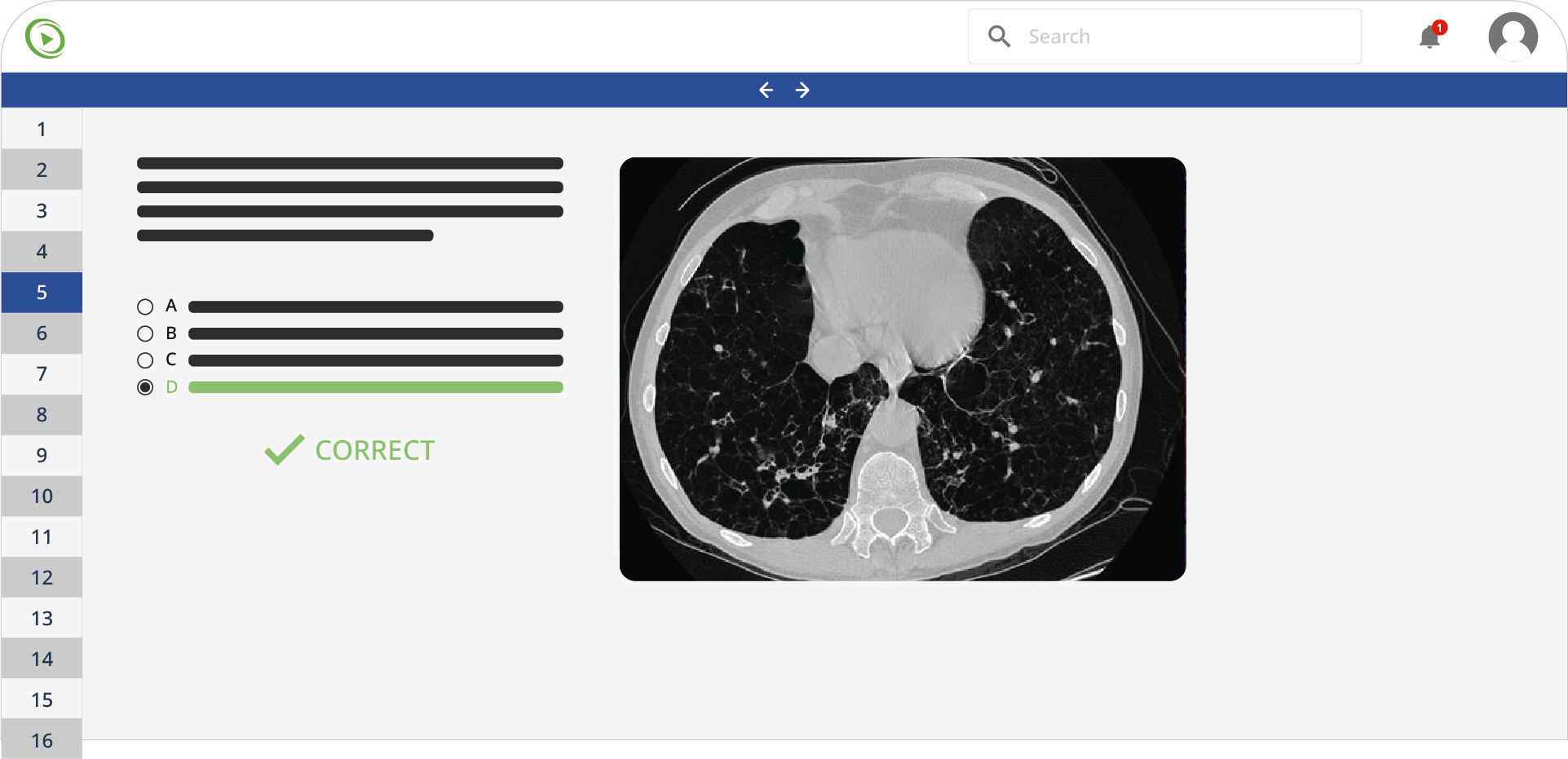A 2-year-old boy is brought to the emergency department by his mother for evaluation of severe abdominal pain that began 1 hour ago. On examination, the patient is afebrile and has diffuse rebound tenderness with acute epigastric pain. A stool guaiac test is positive. A small bowel perforation is suspected. What is the embryologic structure that is the underlying cause of this patient’s presentation?
A. Vermiform appendix
B. Anal membrane
C. Fibrous cord remnant
D. Vitelline duct
E. Cloaca
A 22-year-old woman presents to the gynecologist for evaluation of amenorrhea and dyspareunia. The patient states that she recently got married and has been worried about getting pregnant. The patient states that she has never had a period and that sex has always been painful. On examination, the patient is Tanner stage 5 with no obvious developmental abnormalities. The vaginal exam is limited with no identified vaginal canal. What is the most likely cause of this patient’s symptoms?
A. Hyperprolactinemia
B. Exposure to DES in utero
C. Turner syndrome
D. PCOS
E. Mullerian aganesis
A 35-year-old G2P1 delivers a boy in the 40th week of gestation. The pregnancy was uncomplicated. The newborn had Apgar scores of 7 and 9 at the 1st and 5th minutes, respectively. On physical examination, the newborn is noted to have a left-sided cleft lip. The hard palate and nose are normal. Which of the following statements describes the cause of the abnormality?
A. Failure of development of the 1st pharyngeal arch
B. Failure of fusion of the left maxillary prominence and the medial nasal process of the frontonasal prominence
C. Partial resorption of the 1st pharyngeal arch
D. Failure of fusion of the left maxillary prominence and the lateral nasal process of the frontonasal prominence
E. Failure of development of the left maxillary prominence
A 29-year-old woman presents to a physician for evaluation of palpitations, increased sweating, and unintentional weight loss despite a good appetite. She also reports difficulty swallowing and voice changes. All of the symptoms have developed over the past 6 months. The patient has no concurrent illnesses and takes no medications. The vital signs include the following: blood pressure 125/80 mm Hg, heart rate 106/min, respiratory rate 15/min, and temperature 37.0℃ (98.6℉). The physical examination was significant for increased perspiration, fine digital tremors, and a small mass on the posterior aspect of the tongue, which moves with movements of the tongue. There is no neck swelling. The thyroid profile is as follows:
| Triiodothyronine (T3) | 191 ng/dL (2.93 nmol/L) |
| Thyroxine (T4), total | 22 µg/dL (283.1 nmol/L) |
| Thyroid-stimulating hormone (TSH) | 0.2 µU/mL (0.2 mU/L) |
A radioiodine thyroid scan reveals hyper-functional thyroid tissue at the base of the patient’s tongue. Which of the following statements is correct?
A. This patient is at increased risk of thyroid carcinoma development.
B. Most often in such a condition, there is an additional thyroid tissue elsewhere in the neck.
C. There is a male predilection for this condition.
D. This is the rarest location for ectopic thyroid tissue.
E. This condition results from a failure of caudal migration of thyroid tissue.
A 31-year-old man presents for his annual physical exam. The physician fails to palpate a ductus deferens on the left side. An ultrasound confirms absence of the left ductus deferens and further reveals absence of the left epididymis, seminal vesicle, and kidney. Spermogram and reproductive hormones panel are within normal limits. Left-sided agenesis of an embryonic anlage is suspected. Which two structures are connected by this anlage during embryogenesis?
A. Pronephros and coelom
B. Mesonephros and coelom
C. Pronephros and cloaca
D. Metanephros and coelom
E. Mesonephros and cloaca
Do you want to practice more Embryology questions?
Create a free Lecturio account and you’ll have access to the Lecturio question bank with more than 2,200 USMLE Step 1 practice questions.










